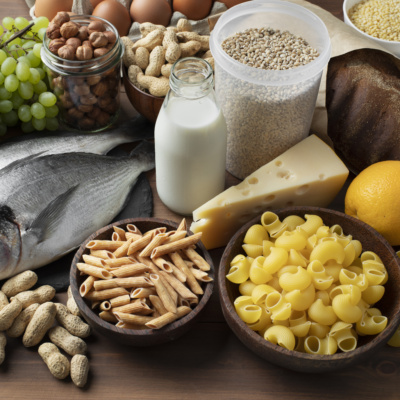top of mind news
- Policy Action Shifts To States And Loyalties
- What Does The Ghost Kitchen Trend Mean For Restaurants?
- National Restaurant Association Reveals 2020 Kitchen Innovations Award Winners
- Restaurant/Hospitality Related Info to Keep Your Business on Trend
- How And Why Restaurants Should Create Predictable Schedules For Workers
- The most influential solutions providers and operators in the country, chosen by Nation’s Restaurant News readers
Poultry
For the week ending February 15th, total chicken slaughter was up 5.8% (y/y) and the six-week sum of RTC production was 7.6% larger than 2019. Elevated RTC output continues to weigh heavy on the various wholesale chicken markets. Chicken wing prices are seasonally falling and are below year ago levels. Further downside potential is likely for wing prices into the late winter before some seasonal demand reemerges. Price increases for wings that occur before the college basketball tournaments begin, may be similar to last year. Chicken tender prices may have a tough time rising amid soft breast markets; the tender-breast spread is its lowest for late February since 2016.
Beef
Last week’s cattle harvest, at 628k head, was 8% larger than last year, but heavier carcasses pushed beef production 10.5% over the year prior. The additional pounds of output are weighing heavy on the beef markets. The Choice cutout slipped 5.5% below year ago levels, but these attractive prices have spurred active spot beef buying. The Choice middle meats led last week’s sales, with active movement noted across the 109E ribeyes as well as the 112A heavies which notched their best weekly sales since December 2017. Coverage across strips and short loins should be visited, with seasonal upside potential soon.
Pork
Pork production continues to outpace year ago levels, with last week’s 565.5 million pounds being up 5.9% from the year prior. While the USDA pork cutout continues to struggle to find some footing, last week’s average in the mid-$0.60s is still 6.4% over last year’s long-term bottom. And while that’s the case, pork belly prices have slipped near historic lows but remain a solid buying opportunity. Pork supplies are getting cleaned up, with both domestic and international orders increasing which suggests that upside price risk is likely into mid-year.
THE SEA
Seafood
The shrimp markets have been tracking close to year ago levels. This is despite tempered imports during the late fall. In December, the U.S. imported 1.3% less shrimp than the previous year. Shrimp imports could improve, however, in the coming months due to a relatively inflated value of the U.S. dollar and slowed trade in Asia. Thus, the near-term risk in the shrimp markets may be to the downside. But assuming Asian trade improves later this year, shrimp prices are likely to rebound thereafter.
THE GARDEN
Produce
The avocado markets are elevated, especially for larger sized product. Mexican production has been short in recent weeks. U.S. imports of avocados last week declined 15.6% from the previous week and were 12.2% less than the same week last year. Avocado prices could remain well supported at least in the near term. February 1st U.S. potato stocks were 4% less than 2019 and the smallest for the date in nine years. The Idaho potato inventory was down by 7.6% from the previous year. Limited potato supplies are likely to persist into the summer which should buoy prices.
THE KITCHEN SINK
Dairy
The CME spot butter market is the lowest in 59-months this week. Per the USDA, domestic butter stocks on January 31st were 14.9% more than the prior year. Seasonally, butter prices are usually choppy in the near term but establish an annual bottom in late-March. The cheese block market is trending lower and is down 21.3% from the 59-month high set last October. January 31st cheese inventories were 1.2% smaller than 2019, but the build for the month was the best since 2006. The cheese block market typically experiences weakness during the next three weeks but can set a yearly bottom in mid-March.
Grains
The food oil markets have remained weak as of late with nearby soybean oil futures declining to their lowest level since September. Soybean oil prices in China have fallen sharply due in a large part to smaller consumption brought on by the challenged economy. Food oil prices could remain soft in the near term.
Oil
Nearby WTI crude oil futures earlier this month fell below $50/bbl. but have since rebounded 7.5% higher. The coronavirus has been a negative influence on the petroleum markets, but a strong U.S. economy may bring crude oil prices to $53/bbl.














